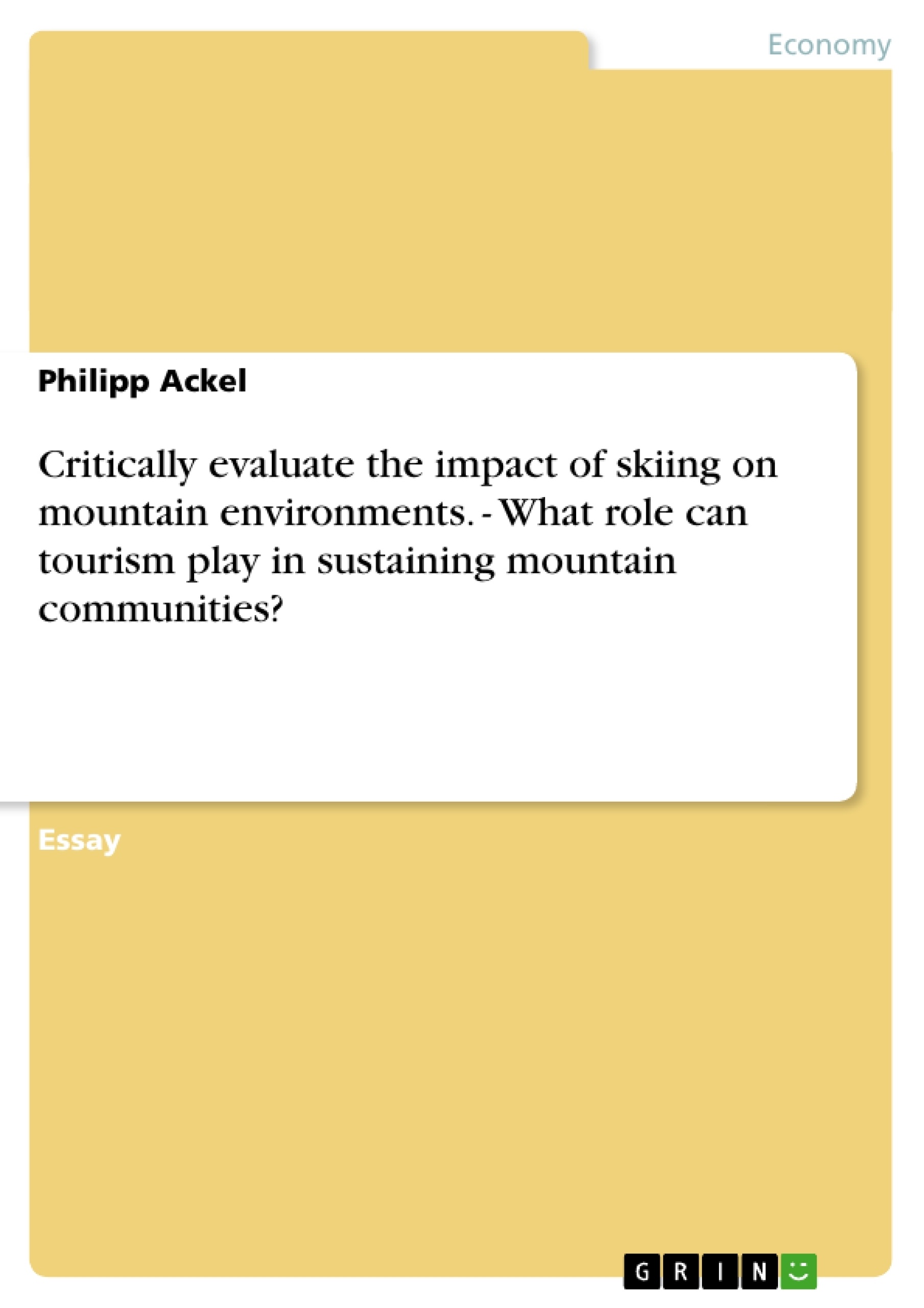Only 75 years ago, skiing was an elite sport practiced by a few hard souls in about 6 mountain resorts in the European Alps. Hotels had just begun to stay open to extend the resorts season. They used to be built mainly for summer vacations, attracting wealthy clients that could afford to travel. In the 1920s the European alpine nations began to build ski lifts, which increased popularity of skiing to new heights. Simultaneously with innovation and the development of new equipment and techniques, skiing attracted more followers and became part of the Olympic games in 1925. Today “forty million skiers can journey to any three hundred major alpine ski resorts around the major mountain chains of forty countries”.
Looking at the European Alps one can see the explosion of skiing tourism. I chose the Alps as main example of my piece of work simply for the reasons, that they are the place where skiing developed and boomed the most and they are also my place of birth and I think I can relate to some of the impacts tourism has. Also no other mountain area is hit that hard by the tourism industry in winter as well as in summer, having about 120 million visitors and covering about one quarter of the World tourism.
Skiing has got major effects especially on the environment of the Alps, but has brought wealth and a consistent income to mountain communities. I will sum up the impacts on environment and the effects on locals, skiing and its tourism has brought.
Inhaltsverzeichnis (Table of Contents)
- Skiing and its tourism
- The environmental impact of skiing tourism
- The economic and cultural impact of skiing tourism
- The benefits of skiing tourism
Zielsetzung und Themenschwerpunkte (Objectives and Key Themes)
This paper critically examines the impact of skiing on mountain environments, focusing on the European Alps as a case study. It explores the relationship between tourism, environmental sustainability, and the well-being of mountain communities. The paper aims to provide a balanced perspective on the benefits and drawbacks of skiing tourism, considering both its environmental consequences and its economic and social implications.
- The environmental impact of skiing, including pollution, habitat destruction, and the use of artificial snow.
- The economic benefits of skiing tourism for local communities, such as increased employment and tax revenue.
- The cultural impact of tourism, including changes in traditional industries and the influence of tourism on local lifestyles.
- The sustainability of skiing tourism, considering the need to balance economic growth with environmental protection.
- The role of government policies in managing the impact of skiing tourism.
Zusammenfassung der Kapitel (Chapter Summaries)
- The first chapter introduces the topic of skiing tourism and its development, highlighting the rapid growth of the industry in the European Alps. It discusses the environmental, economic, and cultural impacts of this growth.
- The second chapter focuses on the environmental impact of skiing tourism, discussing issues such as pollution, habitat destruction, and the use of artificial snow. It explores the challenges of balancing skiing with environmental sustainability.
- The third chapter examines the economic and cultural impact of skiing tourism, highlighting the benefits of increased employment and tax revenue. It also addresses the potential drawbacks, such as the rise in prices and the displacement of traditional industries.
- The fourth chapter considers the benefits of skiing tourism for local communities, discussing the improvements in infrastructure and standard of living that have resulted from tourism revenue.
Schlüsselwörter (Keywords)
Skiing tourism, environmental impact, mountain environments, sustainable development, economic benefits, cultural impact, local communities, European Alps, pollution, habitat destruction, artificial snow, tax revenue, infrastructure, standard of living.
- Quote paper
- Philipp Ackel (Author), 2004, Critically evaluate the impact of skiing on mountain environments. - What role can tourism play in sustaining mountain communities? , Munich, GRIN Verlag, https://www.grin.com/document/78061



